Best Small Trees with Non Invasive Roots for a Garden
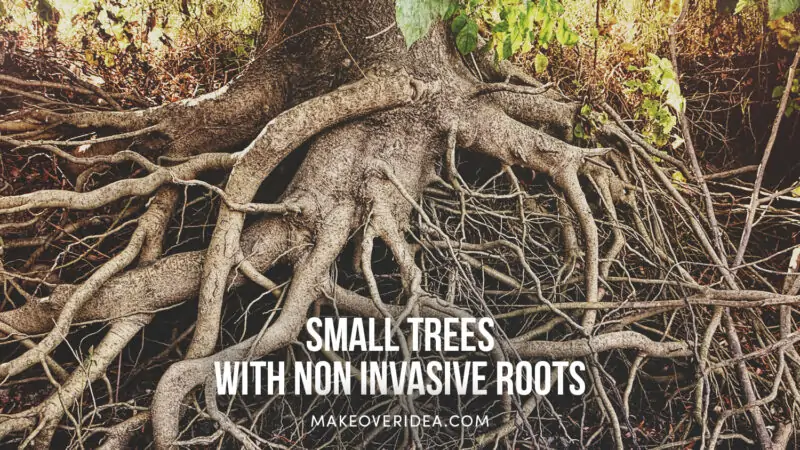
Here is a list of the best small trees with non invasive roots that will complement any outdoor space. As a gardener, you want to ensure that the trees you plant in your yard grow beautifully without causing any damage. When choosing tree species that will thrive in your garden, it is essential not to overlook their root systems. Some trees have so-called invasive roots that can crack concrete pathways or break into underground pipes, causing significant problems. Let us address this issue.
What are Non-Invasive Root Systems?
First things first: let’s have a brief introduction to non-invasive root systems. The term “non-invasive” refers to tree species with lateral or downward-growing roots that don’t interfere with home foundations, water pipes, or sidewalks, potentially leading to costly repairs. Carefully considering tree seedlings is essential when planting trees and making your choice, as some varieties are only suitable for specific environments. In contrast, others proliferate and develop large, hard-to-manage branches. Selecting the right type of tree is crucial for getting a flourishing outdoor space while overlooking this issue can sometimes compromise your property.
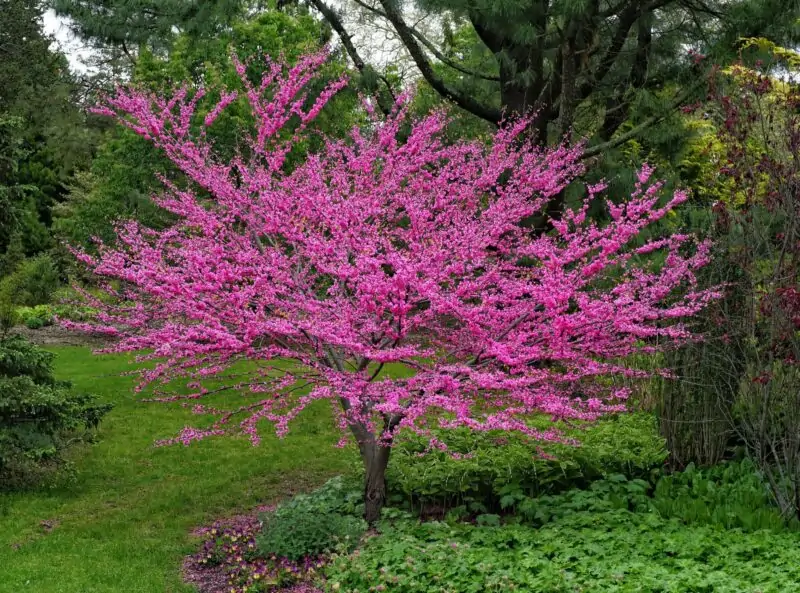
Evergreen Tree: A Year-Round Beauty
Evergreens offer several benefits beyond their year-round beauty due to the rich colors of their needles, even during harsh winters. These trees also provide excellent wind protection, which makes them an invaluable asset on windy properties. Many evergreens have low-maintenance care requirements and high resistance against pests and diseases. The secret to why they grow well lies in the fact that they shed less material annually, even compared to their small deciduous counterparts.
Which Evergreen Trees Have Non-Invasive Roots?
Some ideal evergreens include:
- Arborvitae’ Emerald Green’ – a beautiful ornamental tree known for its conical shape and dark green leaves;
- False Cypress ‘Golden Mop’ – a dwarf variety best used as an ornamental groundcover shrub, producing rich golden leaves;
- Cherry Laurel – this variety produces large glossy green foliage that can be pruned regularly or left wild;
- Boxwood Hedge – this slow-growing evergreen shrub offers a unique texture and can be shaped perfectly: one of the better choices for small gardens.
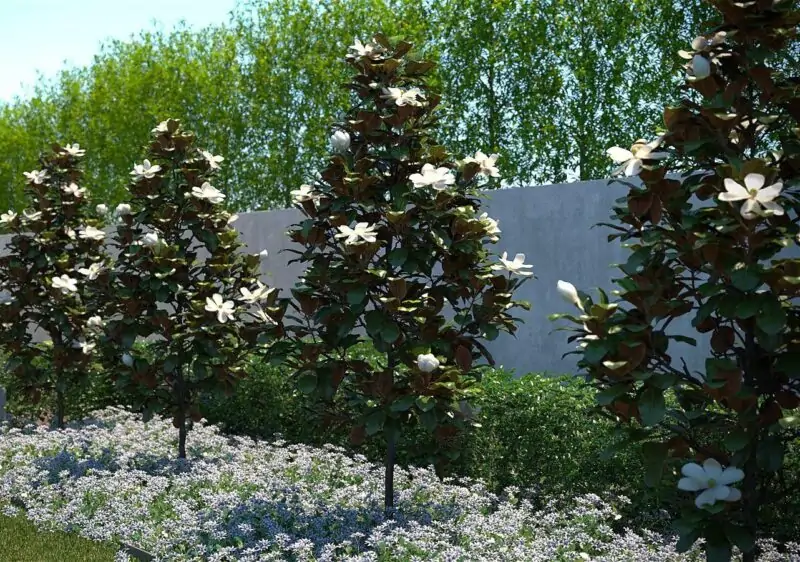
Fruit Trees: Delicious and Root-Friendly
Not only do these trees offer versatility by providing juicy fruits at harvest and excellent shade during scorching summer days. Depending on how they are pruned, they can become fantastic shade providers, resulting in a two-in-one solution for your space and culinary endeavors. Although these deciduous trees lose their leaves in winter, their shallow root systems make them an ideal choice as they mean easier maintenance.
What Fruit Trees Don’t Have Invasive Root Systems?
Any tree from the list below will be a perfect addition to your property:
- Dwarf Peach or Nectarine Tree – adapts quickly to environments and blooms beautifully with large flowers, even indoors!;
- Adams Crabapple – this apple variant does not require another specific type of apple for pollination, and it is pretty famous for its attractive, profuse flower blooms, making it a great candidate for small yards;
- Kousa Dogwood – a preferred choice for shady garden areas that yield abundant rose-scented, eye-popping blooms in both spring and summer! Each type has different yielding seasons depending on the individual species, yet they remain compact enough to fit in small yards readily available around extended homesites.
Can Fruit Trees with Shallow Roots Provide Shade?
Yes! These plants have more than just edible value because wide varieties overgrow, allowing them to provide full coverage over time. While some may be too thin-trunked for genetic reasons, others, like dwarf peaches, create lush, thick foliage, forming fantastic decorative borders.
Types of Maples: Stunning and Safe
These trees are becoming increasingly popular due to their numerous health benefits, as noted by modern medical experts. Maple leaf tea promotes bone health, regulates blood sugar levels, and decreases stress hormones, making them ideal for stress eaters! This type of tree also comes in dwarf sizes, which have a smaller size and display uniquely bright colors on their leaves depending on the season.
Japanese Maple Trees: An Elegant Choice?
Japanese maple is known for its incredibly stunning foliage while providing shade in the garden with its lean and small size, even after reaching maturity. Although it does not yield any specific fruit, some varieties boast a rich history, as intriguing to learn about as late-night televised shows.
Are All Maples Root-Friendly?
Not all types of maples have smaller roots; therefore, only a few are suitable for planting near vulnerable home sites. Moderate-sized yards can support maples with non-invasive roots despite the potential dangers of roots growing to the sides (lateral growth).
Shade Trees: Cooling and Comforting
A lot of people will agree that the best trees are the ones that keep your area cooler during hot summer days of full sun, absorbing unwanted heat and leaving you relaxed as you sip refreshing summer drinks!
Best Shade Trees with Non-Invasive Roots
If you prefer trees that produce shade, here are some top choices for your small to medium-sized yard:
- Redbud Tree – has gorgeous early spring violet-tinted flowers, highlighting the space it occupies;
- Crape Myrtle – this species boasts different hues like red, pink, or white flower blooms during summers;
- Pearl Bush – delivers beautiful white, vanilla-scented blossoms each year. These shrubs with non-invasive roots will never endanger your home’s foundation!;
- Smoke Tree – scentless but dreamily decadent pink-blue cloud-like smoke shapes appear during heatwaves. If nurtured correctly, it can develop several attractive subtle shades, switching between striking yellows and oranges throughout the seasons, adding extra awe-inspiring effects, and turning gardens golden all fall.
How Do Shade Trees Benefit Your Yard?
One significant benefit of shade trees is reduced electricity bills, as they provide natural cooling conditions within our homes and properties, leading to better energy usage and savings. Their benefits are endless while simultaneously enhancing curb appeal as the tree blooms seasonally.
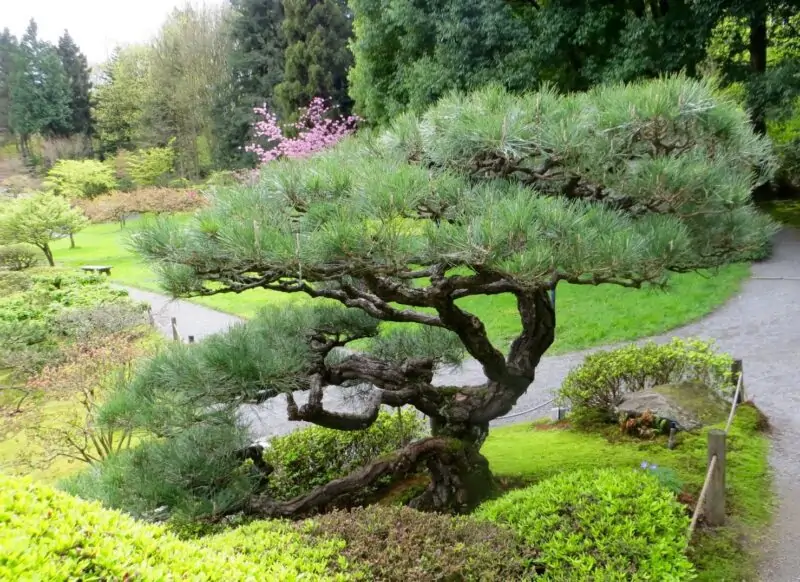
Shrubs and Bushes: Compact and Non-Invasive
If you require more compact types of foliage in your garden, a bush is an excellent option. Their fullness maxes out as greenery sprawls, securing the surrounding area and constantly looking fantastic.
What Shrubs Offer Non-Invasive Roots?
Some examples worth considering include the following:
- Dwarf Korean Lilac – producing potent, fragrant flowers that stand out among other choices! The root structure of this bush is absolutely safe for your property;
- Mock Orange – a vibrant citrus-scented bush giving off white blossoms smelling of classic candied orange peels;
- Spirea – offering bouquet-inspired pink blooms that work gloriously in rocky hill landscapes if uncompromised by soil drainage.
The same could be said for the Chinese Fringe Flower, boasting hues from deep purple to glorious shades of pink and light blue leaves. As the breeze blows gently, it appears to tremble, enhancing the garden’s natural gracefulness.
How to Choose the Right Shrub for Your Garden?
When selecting the plant that will thrive best, evaluate your desired preference and style, as these options all offer unique benefits depending on the visual appeal you want. Consider researching each species’ requirements to ensure they are nurtured correctly!
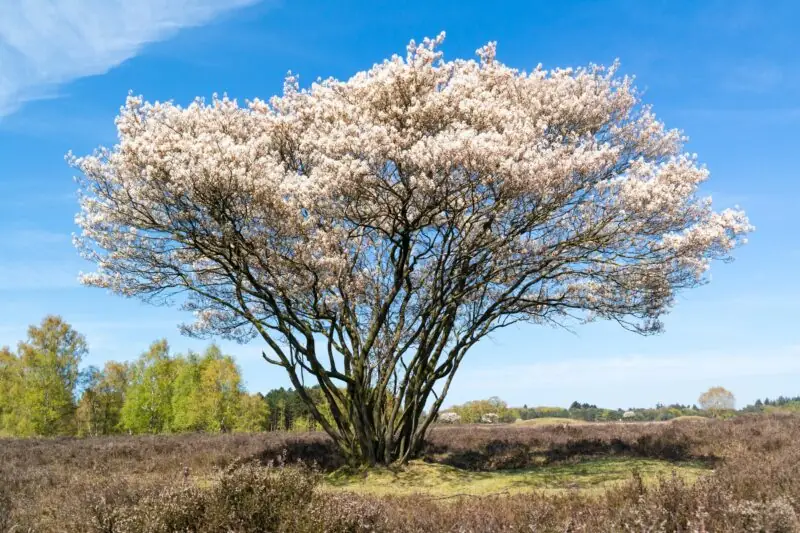
Tips for Planting Small Trees with Non Invasive Roots
It’s essential not only to choose trees with small root systems but also to plant them correctly! Below are tips on how and when:
When is the Best Time to Plant?
The ideal planting season depends mainly on regional weather patterns, so remember to determine the specific plants’ hardiness zones beforehand. Planting should generally take place during early fall, as doing so offers the maximum time for growth.
Be mindful, though, that icy conditions can trigger transplant distress, as freeze-thaw cycles reduce root vitality, thus affecting shoot growth rates and potentially causing lethal injuries.
How to Prepare Your Garden for Small Root Systems?
To prepare your garden for small root systems, follow these steps:
- Check soil acidity and adjust it according to the species’ needs before planting;
- Dig a hole twice the size of the root ball, making sure it is nestled with care at a depth no closer or greater than the initial soil line level in your waiting garden plot;
- Protect by mulching around the plant.
Pay attention to the area surrounding the plant for anything that might affect its growth, such as crowding or drainage issues. Address these factors and apply fertilization treatments as needed to ensure the health of your plants.
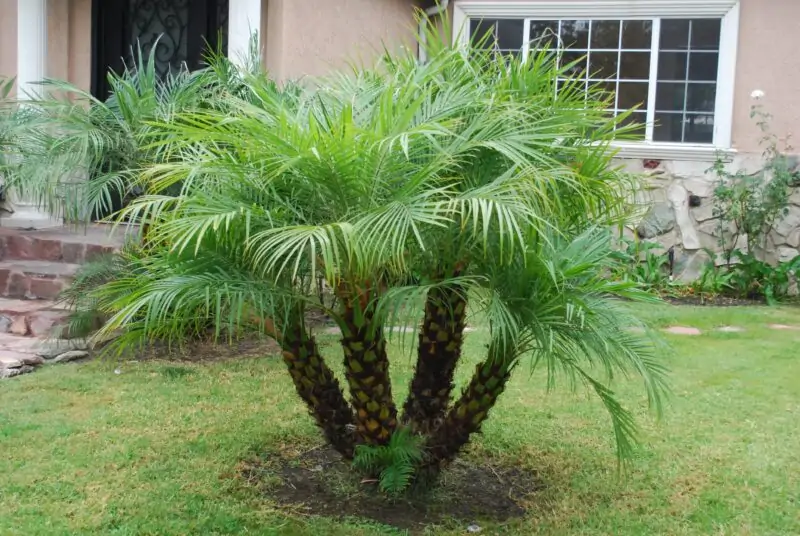
Frequently Asked Questions
What are the Two Types of Root Systems?
The two types of root systems include roots that extend away from the trunk and are called lateral root systems and the adventitious root systems, which originate from other parts of the tree and initially sprout as a vine before becoming free-standing saplings. Both types have the same objective of proliferation and support for the tree.
How Can Invasive Tree Roots Affect My Property?
They can affect water pipes, cause underground damage, create severe foundation cracks, and lead to costly repairs. Additionally, trees with invasive root systems often don’t thrive or bloom well, impacting the appearance of your entryways and drying out surrounding greenery when not managed properly.
Do Tree Roots Damage Pipes and Foundations?
Yes! Therefore, choose wisely when selecting trees for your property. Invasive tree roots are known for causing significant damage to pipes and foundations, leading to frequent plumbing problems, damaged landscaping, and weakened building structures. All of this can negatively affect property values over time.
Conclusion
Choosing non-invasive trees is essential for property owners who want thriving gardens without experiencing the costly issues caused by invasive tree root growth. Our list of the top small trees with non invasive roots, featuring options like crabapple, dwarf Korean lilac, and smoke tree, aims to enhance your garden’s aesthetics while keeping it safe. We hope this article has helped you select the ideal species for your space. With proper seasonal preparedness, you can continue to hone your gardening skills and enjoy a beautiful, thriving garden for years to come.